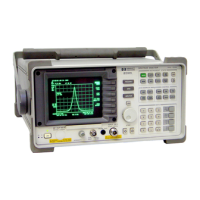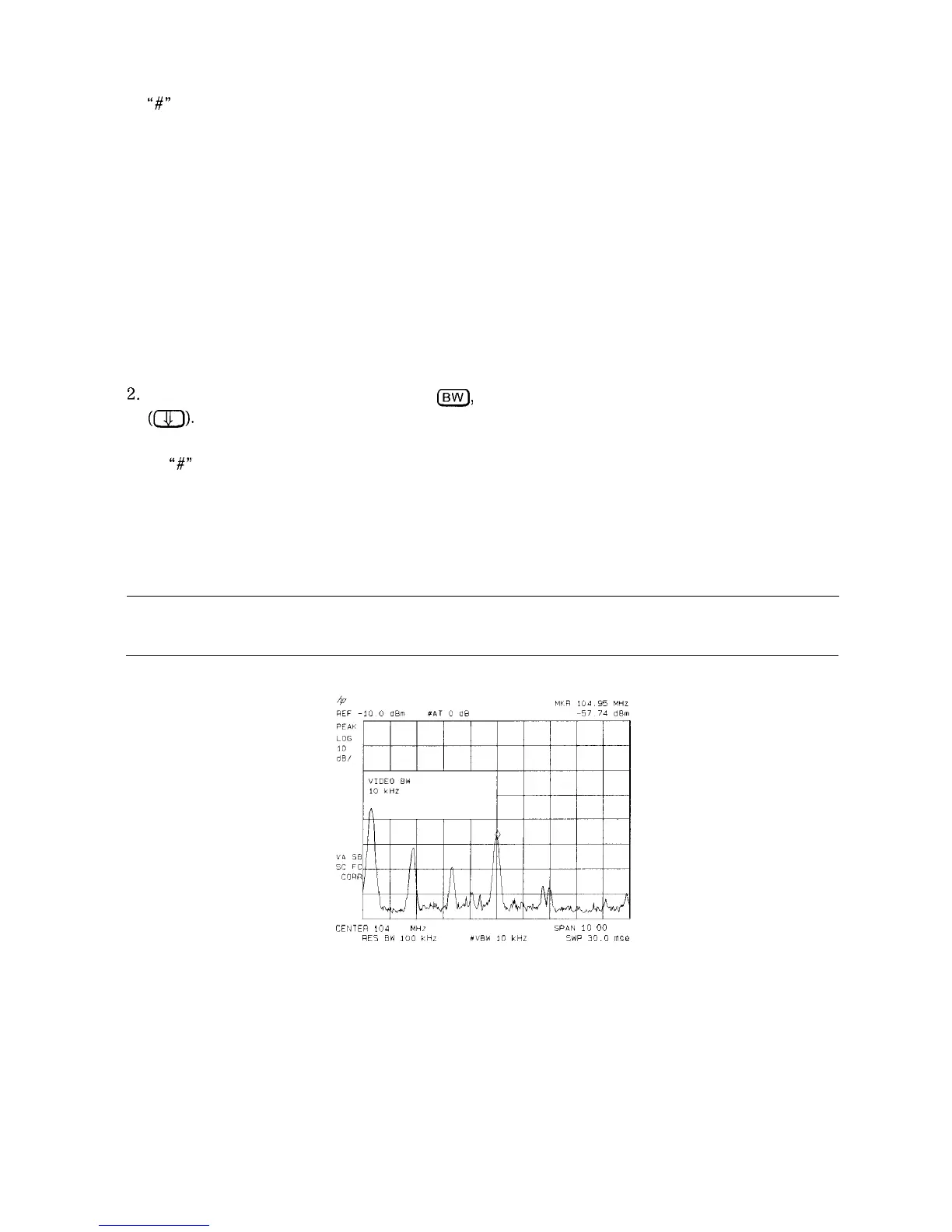A
“#I’
mark appears next to the RES BW annotation at the lower-left corner of the screen,
indicating that the resolution bandwidth is uncoupled.
As the resolution bandwidth is reduced, the sweep time is increased to maintain calibrated
data.
Example: The video-filter control is useful for noise measurements and observation of
low-level signals close to the noise floor. The video filter is a post-detection low-pass filter that
smoothes the displayed trace. When signal responses near the noise level of the spectrum
analyzer are visually masked by the noise, the video filter can be narrowed to smooth this noise
and improve the visibility of the signal. (Reducing video bandwidths requires slower sweep
times to keep the spectrum analyzer calibrated.)
Using the video bandwidth function, measure the amplitude of a low-level signal.
1. As in the first example, connect an antenna to the spectrum analyzer input. Set the
spectrum analyzer to view a low-level signal.
2.
Narrow the video bandwidth by pressing
Isw],
VID BW AUTO MAN , and the step-down key
((7J-J).
This clarifies the signal by smoothing the noise, which allows better measurement of
the signal amplitude.
A
“#”
mark appears next to the VBW annotation at the bottom of the screen, indicating that
the video bandwidth is not coupled to the resolution bandwidth.
Instrument preset conditions couple the video bandwidth to the resolution bandwidth
so that the video bandwidth is equal to or narrower than the resolution bandwidth. If
the bandwidths are uncoupled when video bandwidth is the active function, pressing
VID BW AUTO MAN (so that AUTO is underlined) recouples the bandwidths. See Figure 3-19.
Note
The video bandwidth must be set wider than the resolution bandwidth when
measuring impulse noise levels.
CEIJTEP 104 93
MH‘~
5P4N
10
0”
MHZ
HE5
BW
100 YHL
#VW
I”
lrtiz
SW
30.0
mse
Figure 3-19. Decreasing Video Bandwidth
Making Basic Measurements 3-17

